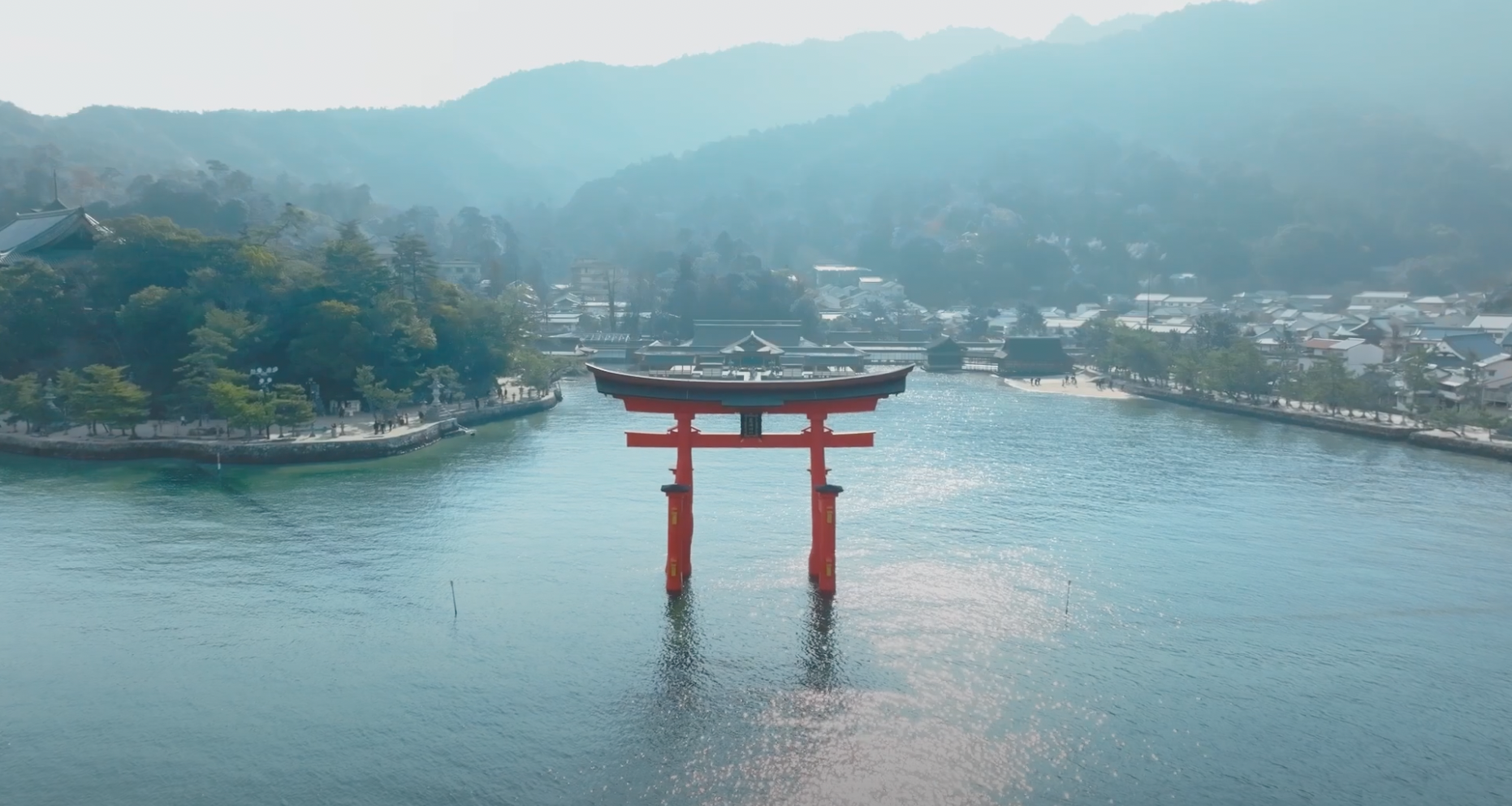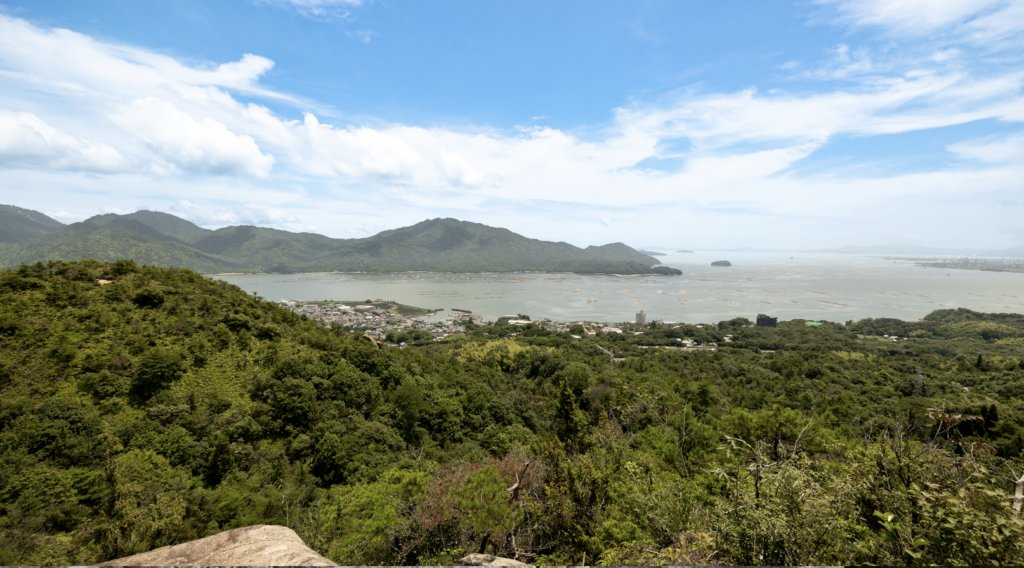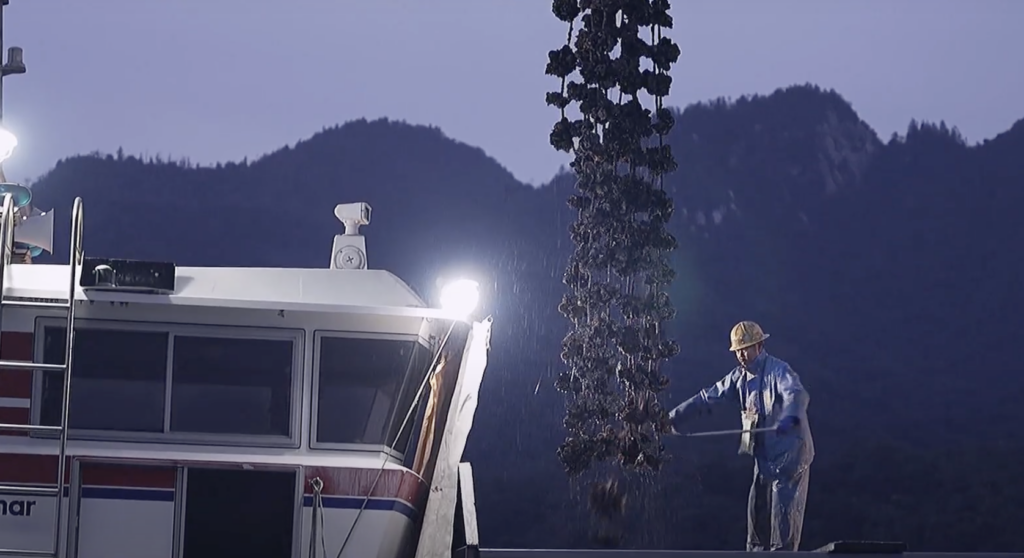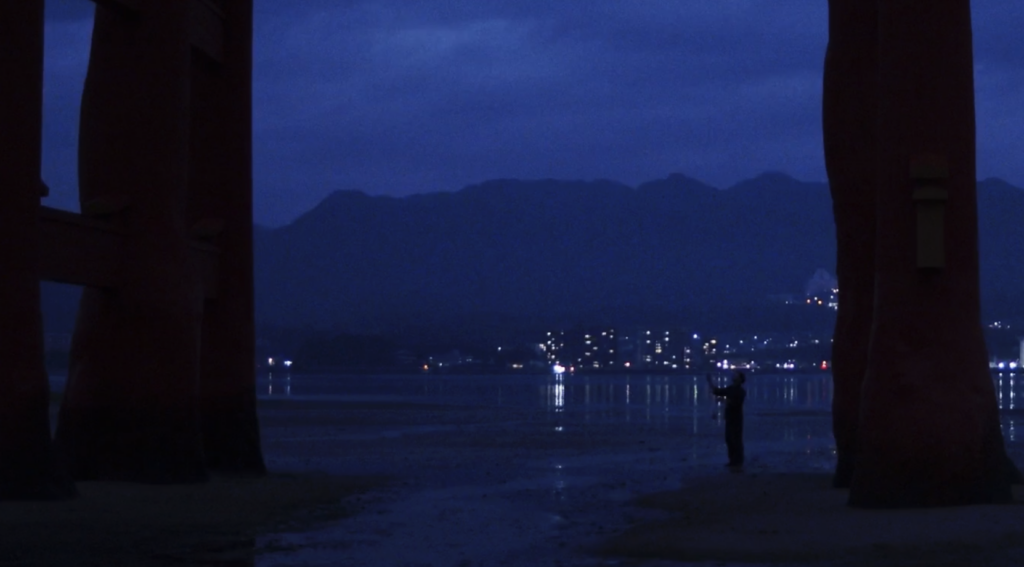MIYAJIMA - 宮島 -
Embraced by Serene Nature and Mystical Power:
A Tranquil Seaside Town for Inner Harmony
The Seto Inland Sea, a captivating sea that has fascinated people around the world. The beautiful landscapes created by calm nature and climate, along with the mystical energy that can be felt throughout the body, are unique to this area. Simply being there allows you to experience a mysterious time that calms the soul.

The Regional Climate
and Landscape
The landscape stretching across the Seto Inland Sea is characterized by a calm sea with waves resembling a lake, numerous islands floating on the surface, and a warm climate with abundant sunshine. “With its vast and graceful scenery, there is nothing else like it in the world. In the future, this region will be highly regarded as one of the most attractive places worldwide, attracting many people. I pray that this state, which has been maintained for such a long time, will continue for even longer,” wrote geographer RittHofen in the 19th century, who also published his travel account praising its beauty to the world. In 1934, it was designated as the first national park in Japan.

Furthermore, the Seto Inland Sea region prospered as a vital transportation hub where people used to travel. Before the development of railways, it served as a major artery for the circulation of various products such as fish, indigo, tobacco, sugar, and cotton.
The unique culture and activities nurtured within the rich natural environment and people’s interactions can be found in this area.

Continuity of Regional Culture
The “Sacred Land” where the divine dwells
Among the Seto Inland Sea, the vicinity of Miyajima is an especially mystical area. Miyajima itself is considered a sacred place, and the entire island is regarded as a divine object. Its distinctive vermilion torii gate represents the area and serves as a symbol. In the Heian period, the warlord Taira no Kiyomori, who deeply revered Miyajima, constructed a shrine to pray for maritime safety. Additionally, a Shinto ritual called “Shichinohama Meguri” was born from the journey around Miyajima in search of the location where the three goddesses are enshrined. It is said that warlords from the Warring States period, including Oda Nobunaga, also visited seven shrines to pray for military fortune.


Living in Harmony with the Sea
What to eat, what to create, what to pursue— the sea is an inseparable part of life in the Seto Inland Sea region. In terms of food, it is one of Japan’s leading oyster-producing areas. The sight of oyster rafts floating on the sea is a picturesque scene along the coast of the Seto Inland Sea. Moreover, the custom of “Shiokumi,” where people go to a beach with a torii gate and use a bamboo ladle to scoop seawater and purify the shrine grounds, is a unique tradition on the island to express gratitude to the gods and nature for the beginning of a new day.


